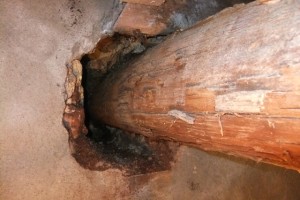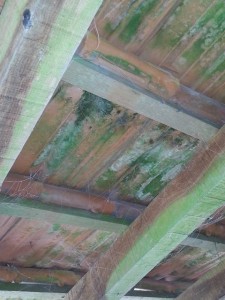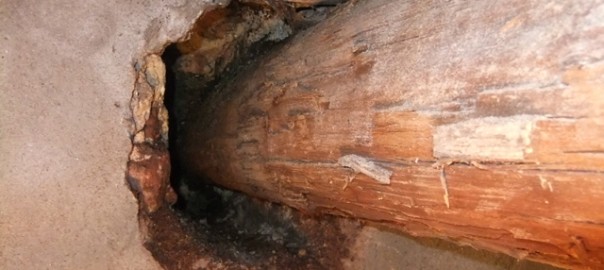Have you just bought a house in Portugal and think that it may have a dodgy roof.
At first sight the roof no doubt looked OK with that typical rustic curved shape to it.
Having time to think, taken a closer look and climbed into the loft you can see daylight, lots of wood worm holes, rubbish and mouldy support timbers.
The question is which of these 3 is the biggest problem?
daylight, wood worm holes or mouldy timbers?
Here come a few IF’s
IF – the roof support timbers, rafters, purling and ceiling joists are wet and showing signs of mould then there is a major issue. Look at where the roof support timbers, rafters, purling and ceiling joists enter the walls of the house. Can you poke a screw driver into the wood there.

Are they rotten and not being supported by the walls ?
At the apex of the roof are the roof joists/rafters lying against each other or are they rotten or miss aligned.
IF – you can see daylight. Is it because roof tiles are missing, slipped or broken.
Is there a line of light around the perimeter walls or ridge (apex of the roof)
Are there any plants growing inside the roof space.
Can you see patches that are wet or pools of water in the roof space.

IF– you can see lots of wood worm holes in the roof support timbers, rafters, purling, ceiling boards and ceiling joists. Can you stick a small thin screwdriver into the timber easily? Is the timber hollow sounding when you tap it.
If you put weight on the timber does it bend a little (spring)
There is a very good chance if the roof has a “typical rustic curved shape” then some or possibly all of the above have had a role to play in its downfall.
It can be very dangerous moving around in damaged roofs so why not call in Castelo Construction so that we can give you our opinion and peace of mind.
Check out or website at WWW.casteloconstruction.com
We work all over Portugal


